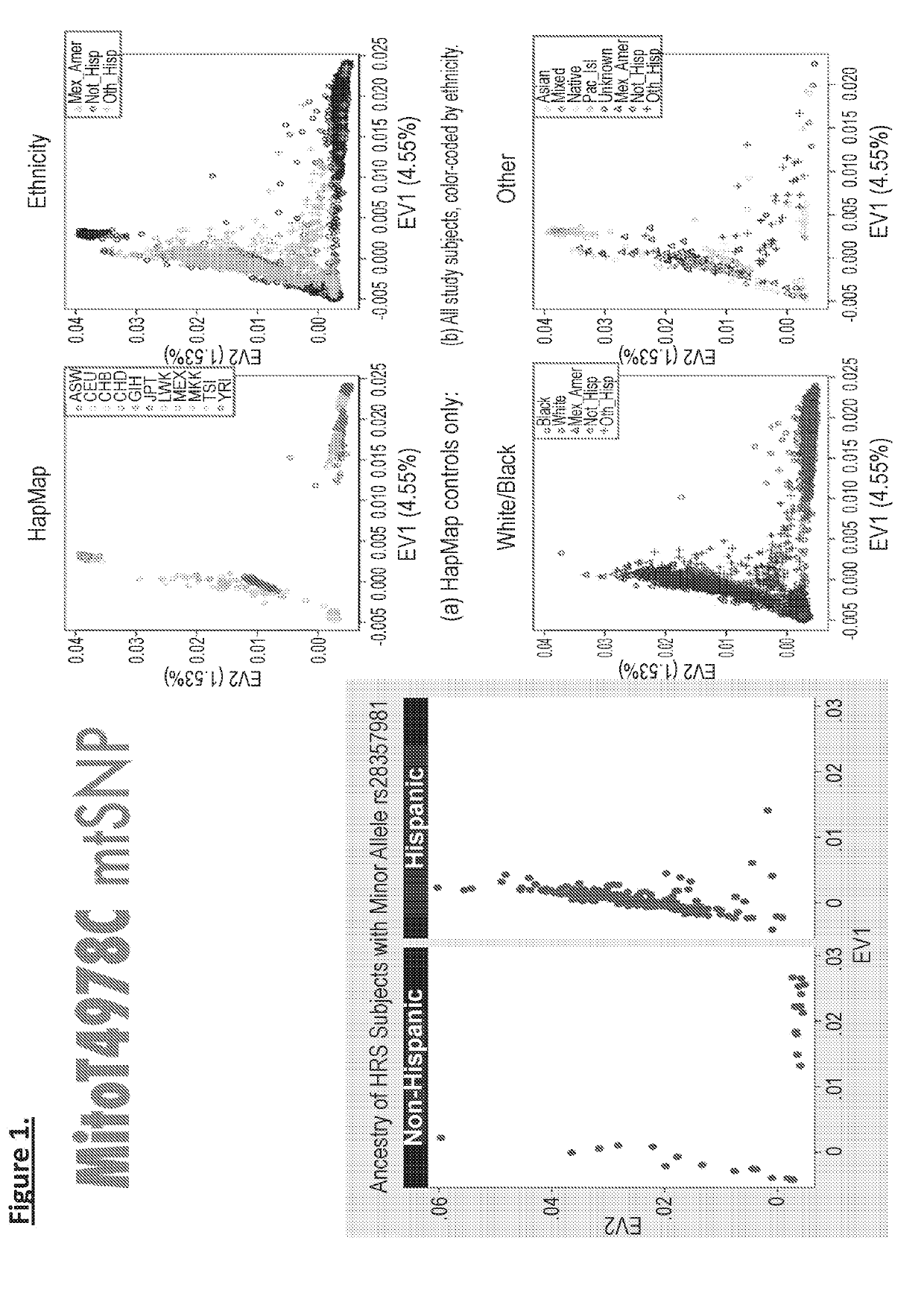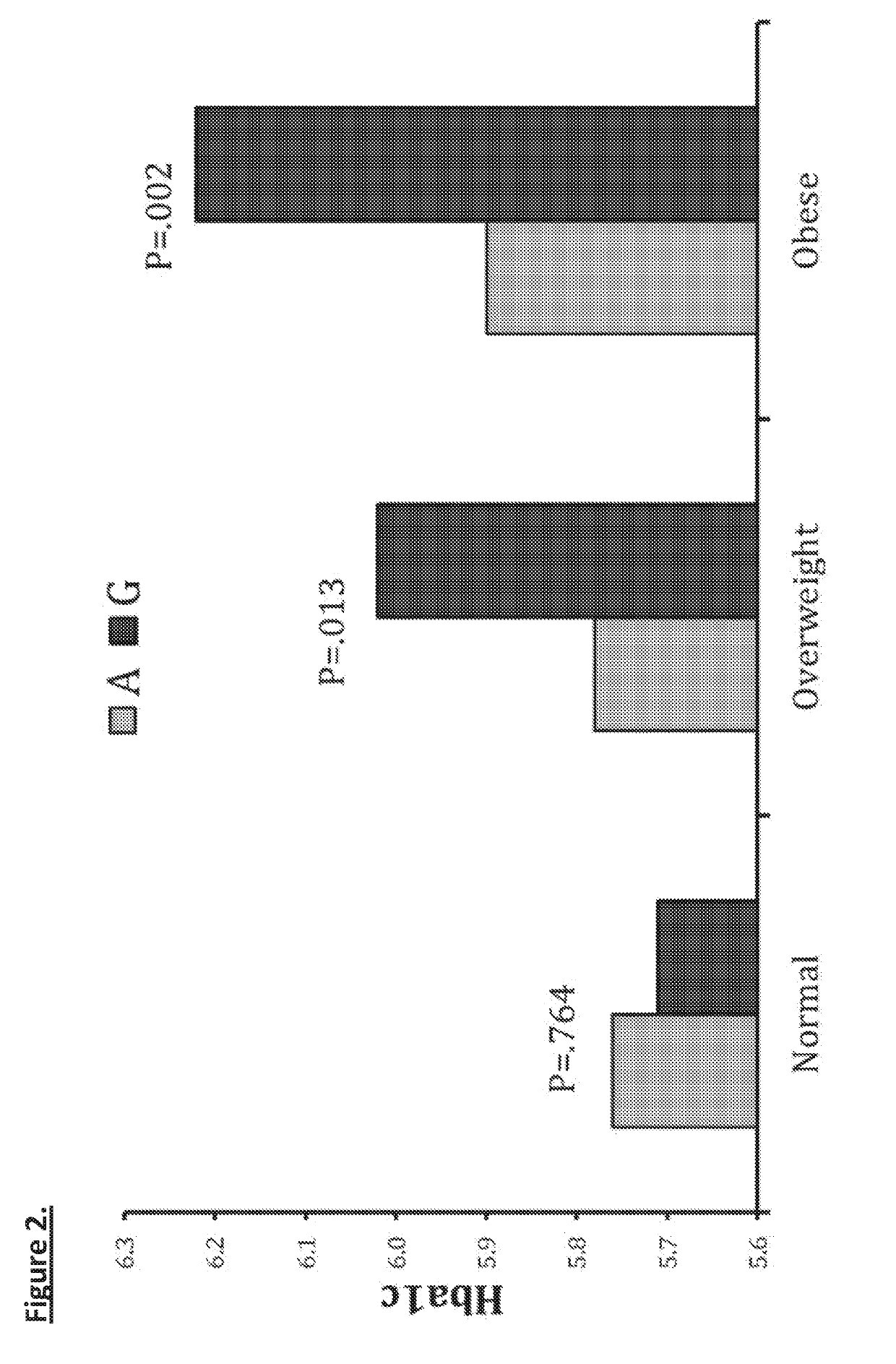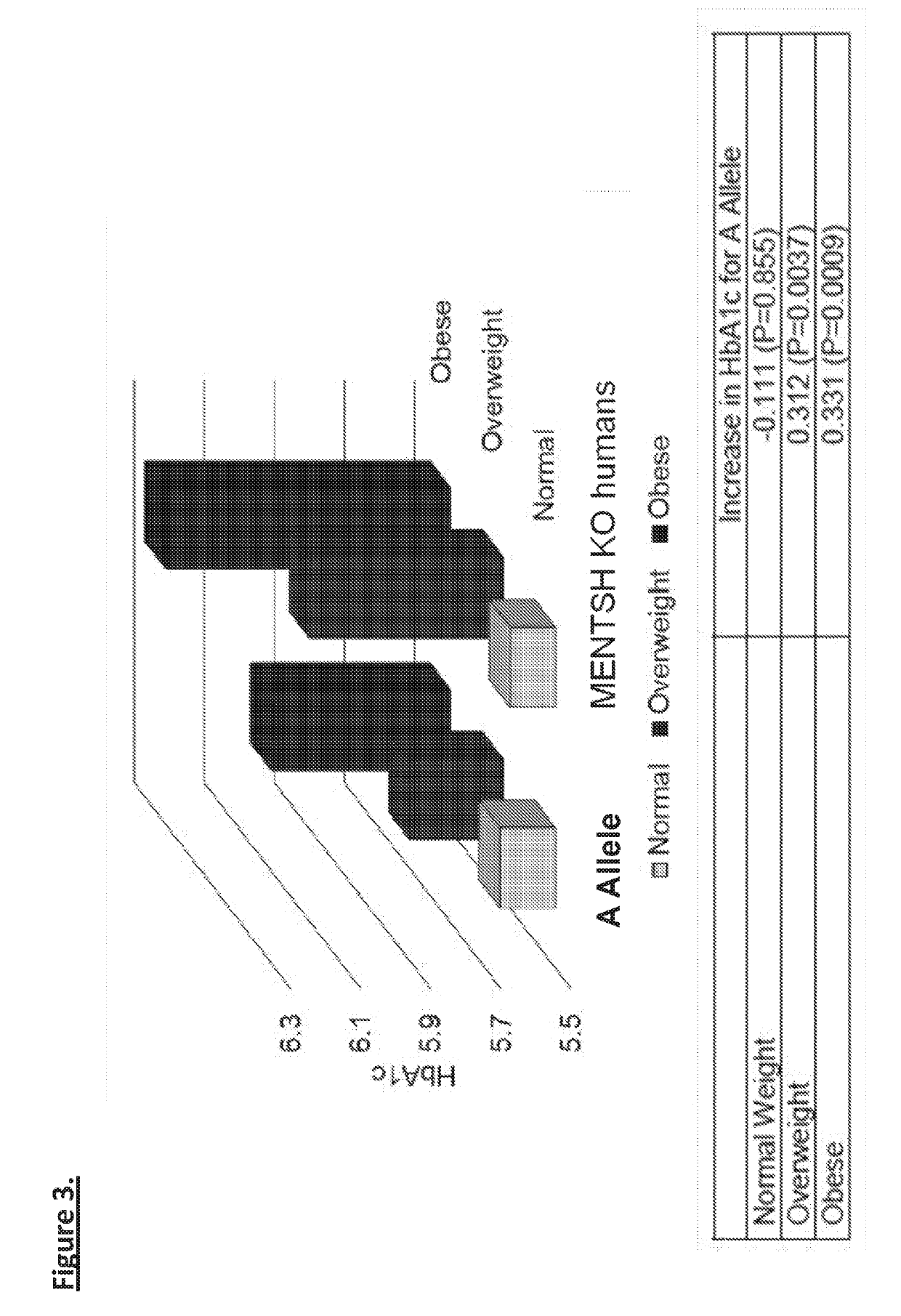Mentsh analogs as therapeutics for diabetes, obesity, and their associated diseases and complications
a technology of mitochondrial peptides and menth analogs, which is applied in the field of mitochondrial peptides, can solve the problems of causing thousands of deaths, and costing more than $20 billion annually, and achieves the effects of increasing the effect of snp on hba1c, increasing the risk of diabetes, and ensuring the effect of snp
- Summary
- Abstract
- Description
- Claims
- Application Information
AI Technical Summary
Benefits of technology
Problems solved by technology
Method used
Image
Examples
example 1
Discovery
[0079]The Inventors performed a genome wide association study (GWAS) for 9,825 Health and Retirement Study (HRS) participants to examine the association between mitochondrial variants and glycosylated hemoglobin HbA1c. The GWAS was run for 68 mitochondrial SNPs with minor allele frequencies >0.01. Models were adjusted for age and population stratification (the first 4 Eigen-values). One SNP (MitoT4978C, also known as Rs28357981) was found to be significantly associated with HbA1c after adjusting for multiple-testing (P=4.9E-04, Bonferroni P=0.03) (FIG. 1).
[0080]Next, examining the association between this SNP and diabetes diagnosis revealed that the SNP is associated with a 38% increase in the risk of diabetes, but not associated with heart disease or hypertension
example 2
Ethnicity Effects
[0081]Interestingly, the SNP is far more common in participants who self-identify as Hispanic (MAFHispanic=18.65 vs. MAFNon-Hispanic=0.27). When the association between MitoT4978C and HbA1c was examined by Hispanicity, results remained significant.
example 3
[0082]When examining the association between MitoT4978C and Hb1ac by body mass index (BMI), the Inventors found a significant SNP×BMI Interaction (FIG. 2). Specifically, results showed that as BMI increases the effect of the SNP on Hba1c increases. Even after adjusting for age, sex, race, and BMI the risk of having diabetes is almost 2-fold higher in the G / C allele group (OR: 1.90, p<0.0001) (FIG. 3).
TABLE 2Allelic distribution in normal weight,overweight and obese subjectsIncrease in HbA1c for A AlleleNormal Weight−0.111 (P = 0.855) Overweight0.312 (P = 0.0037)Obese0.331 (P = 0.0009)
PUM
| Property | Measurement | Unit |
|---|---|---|
| concentration | aaaaa | aaaaa |
| length | aaaaa | aaaaa |
| concentration | aaaaa | aaaaa |
Abstract
Description
Claims
Application Information
 Login to View More
Login to View More - R&D
- Intellectual Property
- Life Sciences
- Materials
- Tech Scout
- Unparalleled Data Quality
- Higher Quality Content
- 60% Fewer Hallucinations
Browse by: Latest US Patents, China's latest patents, Technical Efficacy Thesaurus, Application Domain, Technology Topic, Popular Technical Reports.
© 2025 PatSnap. All rights reserved.Legal|Privacy policy|Modern Slavery Act Transparency Statement|Sitemap|About US| Contact US: help@patsnap.com



